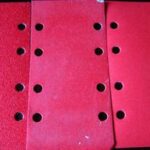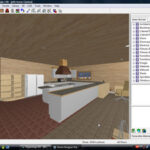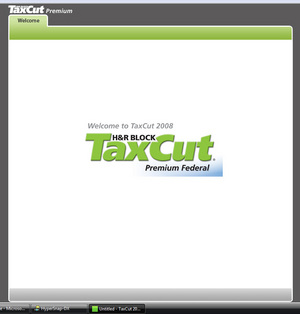These days, when Computer-Aided Drafting (CAD) does most of the hard work, many draftsmen no longer use real tables. But if you still prefer velum, T-square, triangles, rule and pens you’ll appreciate this plan for building your own drafting table.
This is a one-day project using materials you can find at Lowes or Home Depot for under $100. You won’t need any fancy tools or special skills, just your basic Carpentry 101 stuff. You can even adjust dimensions to suit your own needs.
This is an easy and versatile drafting work surface that will last for years. This design features tons of storage space, two nifty pencil trays, an optional drawer and room for paper or velum sheet storage, too. Why spend over $1000 for your next drafting table, when you can build this one yourself for one tenth the price?
Instructions:
Step 1
Decide your working height
Before you build a table, decide what chair you’re going to use. Will it be a stool, or a bench? An office chair? Every draftsman has his preferred seat, so pick yours before you do any cutting.
To determine your desk height, sit on your chosen seat and measure the distance from the floor to your elbow, with your arms held as if there was a steering wheel just above your knees. This will be the height of the near edge of your drafting surface.
Step 2 Decide how wide, too
This design can be adapted to the space you have available, and to the drawing board you prefer. T-squares and drafting boards come in standard sizes, so that’s a basic consideration. It never hurts to have some extra space for triangles, notes, and stuff in general.
Minimum width is the size of a standard desk kneehole, about two feet.
Since we’re aiming to cut all the pieces for this table from a single 4 x 8 sheet of particle board, we’ll choose a modular size that works well for that.
Step 3 Draw out your desk’s pieces on the sheet
Use two sawhorses and two scrap 2 x 4’s to support your full sheet of particle board at a comfortable cutting height. A drywall T-square is very helpful for marking your pieces, but not required.
You’ll need to mark the following components:
- Top board
- Desk bottom
- Sheet shelf, same size as desk bottom
- Left and right sides (angled)
- Back stretcher
Modify this sample layout as needed. Click to view larger image.
Step 4 Carefully cut out your pieces
Cut the top and back stretcher first, to reduce the size of the sheet you’re working on right away. Notice that the top has at least two factory edges (perfectly square).
Next, cut out the desk bottom and sheet shelf, both the same size.
Finally, working with a much smaller sheet, you can cut the trickier side pieces, as well as the small desk back stretcher.
Step 5 Mark your table sides
Before you stow the sawhorses, mark your two side pieces for the shelf and desk bottom. Lay the two parts long-edge to long-edge (mirror image), and use a straight-edge to mark the locations for each shelf piece, like this:
Step 6 Drill holes for main screw set
Using the marks you made on your two side pieces, drill 1/8″ pilot holes to aid assembly of the desk bottom and paper shelf.
Each shelf board will go just beneath the lines you drew, so offset your pilot holes by about 1/4″. Pilot for at least 4 screws per line; 6 is better. Countersink each hole from the opposite side (lines face inside the drafting table).
Drill 8 more pilot holes, as marked above in red dots, and countersink these the same way. Now you’re ready to begin assembly!
Step 7 Begin assembly with the first two pieces
Put the sawhorses away, and clear a space on the floor to assemble the main pieces of this table: the sides and both shelf boards. This is easier with a helper.
Use ordinary 1 5/8″ coarse-thread drywall screws (black, sold by the pound) for assembly. Install the lower shelf first — the one that will form the paper cubby-hole. Use a framing square, or a square piece you’ve cut, to make sure the shelf lines up square to the side, as shown below.
Keep the back of the shelf appx 3/4″ away from the back edge of the side panel!
Next, assemble the other side to that shelf in the same way. Now, those three pieces will stay up on their own, making the rest of the assembly easier.
Click for larger image
Step 8 Carefully stand the table upright, continue assembly
Being careful not to strain your screw-joints, stand the three-piece assembly upright, with the back facing you. At this point, the pieces will be a bit rickety, so work carefully.
Add the back panel now, spanning side to side and flush to the top (long edge) of each side. This board encloses the “desk” section and braces everything nicely. If the bottom of your back panel isn’t flush to the bottom of the installed shelf, don’t worry. It’ll still work just fine.
Screw the back using the three pre-drilled holes (red dots) on each side. Next, measure, drill, and screw the back panel into the edge of the paper shelf. Use 4 to 6 screws, as before.
Step 9 Install the front shelf brace and optional drawer divider
Using a 30″ piece of clear 1 x 2 pine, add a knee-brace beneath the paper shelf. This board goes beneath the shelf, flush to the front of it. Use the two red-dotted screw holes from earlier, one from each side. Then pilot and countersink 3 or 4 more screws through the top of your shelf, down into the pine brace board.
(See image at top of page to clarify this part. It goes just above your knees)
OPTIONAL DRAWER SLOT: Look at the image at the top of the page, and decide if you’d like to include a tool-drawer. It’s handy, but not at all necessary. What size velum or drafting paper will you be using? Is there room for a drawer, given the shelf dimension?
If so, use a piece of pine as a front-to-back divider. The pine should be ripped to match the distance between your paper shelf and desk bottom (see next step). Attach with glue or screws.
Step 10 Now add the desk section bottom shelf
Install the second shelf exactly the same way you installed the paper shelf. Use spacer blocks cut from scrap material to maintain the exact distance between the lower and upper shelves:
The desk-bottom shelf goes flush to the top of the shorter, front edge of each side panel.
Measure, mark, pilot and countersink 4 to 6 screws from the back, through the back panel and into the back edge of the desk shelf panel. If you installed a drawer divider, add a couple of screws from the top of this new shelf, down into the dividing piece.
Your project is almost complete, and should be quite sturdy at this point!
Step 11 Install hardware: U-channel and piano hinge
Using a hacksaw, cut a piece of 1/2″ aluminum U-channel (hardware store) to match your shelf width: 30″ in this case. This forms a nice little pencil-holder and keeps things from falling out of the desk’s interior. Attach to desk shelf using small screws, with channel top flush to the sloped edge of the side panel (see end view, below).
Add a 24″ to 30″ piano hinge (depending upon your table’s width), flush to the top of the back panel, hinged outward and upward for attachment to the bottom side of the desk-top/drafting table top (see end view, below). It’s usually best to drill tiny pilot holes for piano hinge screws; don’t over-tighten these screws — they’ll strip or break.
Step 12 Add your desk-top, almost finished!
The desk-top / drafting board is the largest piece, and overhangs all edges. Allign this final board so that it’s square with the sides and overhangs the front a bit. This is a personal decision, so adjust to suit yourself. (See end view, above)
Attach the top by screwing the piano hinge to the underside of it, again taking care not to strip the tiny screws. This is easiest with a helper, just to keep the top from sliding down or shifting off-square.
OPTIONAL: Add a second piece of 1/2″ aluminum U-channel flush to the bottom edge of your desk top, as a pencil holder and a stop for using a portable drafting board atop this table. (See the photo at the top of this page)
Step 13 OPTIONAL: Add that little parts drawer
Drafting requires a whole bunch of little tools — triangles and templates and stuff. It can be very handy to have a drawer to stow them in. If your table had room for one, and you installed the optional drawer divider between the two shelves, now you have to make that drawer.
The drawer should fit snug, but not so tight that it sticks. Use your inside height and width and deduct about 1/8″ from both. Don’t bother making the drawer full-depth; that wouldn’t be useful. 16″ deep (long) is fine.
A drawer is just a box without a lid, and with a front attached. Use pine, 1/8″ Masonite (or similar) for the bottom, and make the front about 1/2″ bigger than the drawer’s cross-section. This drawer won’t use any special hardware, just to keep things simple. (See plan drawing, above. Click to view larger image.)






